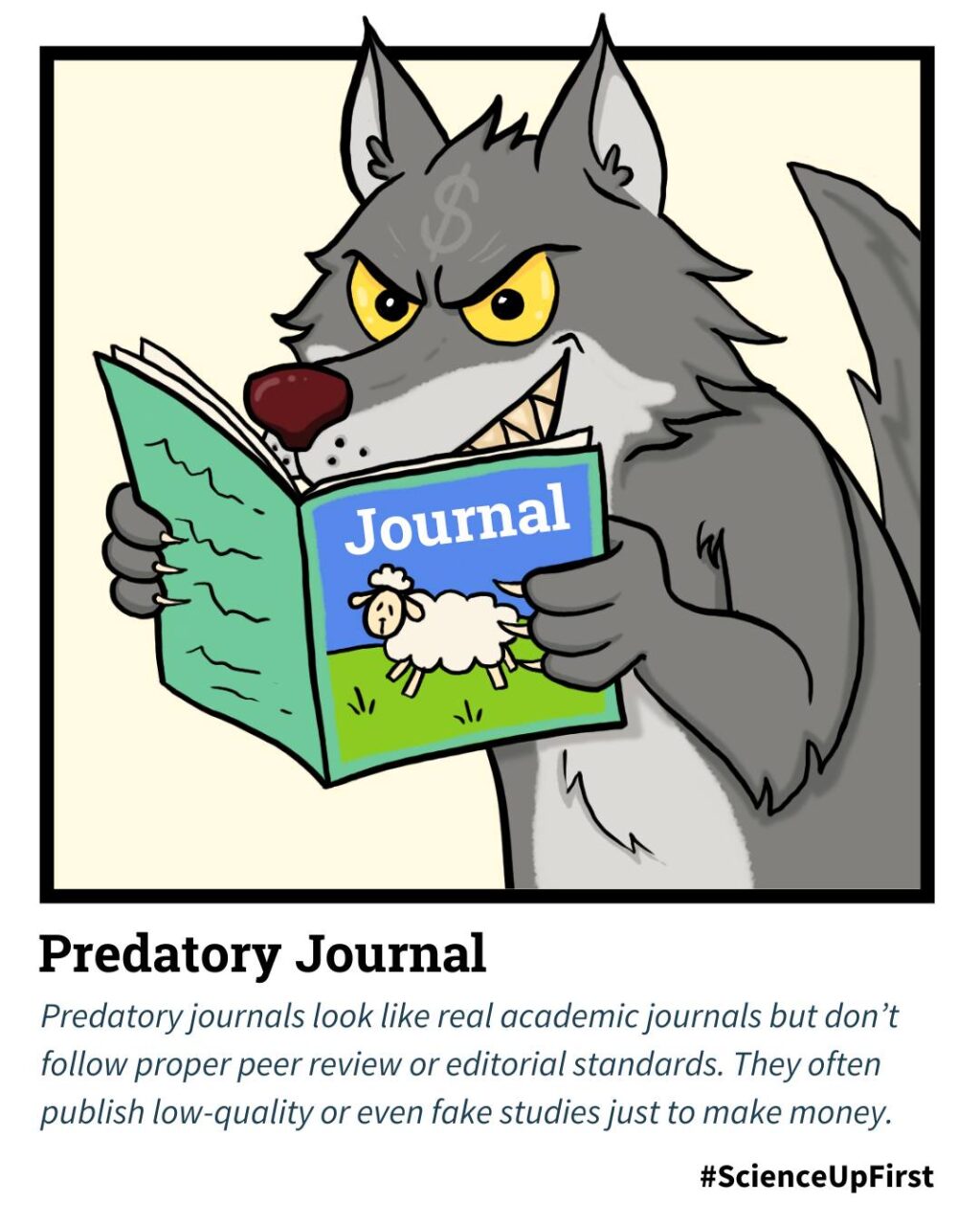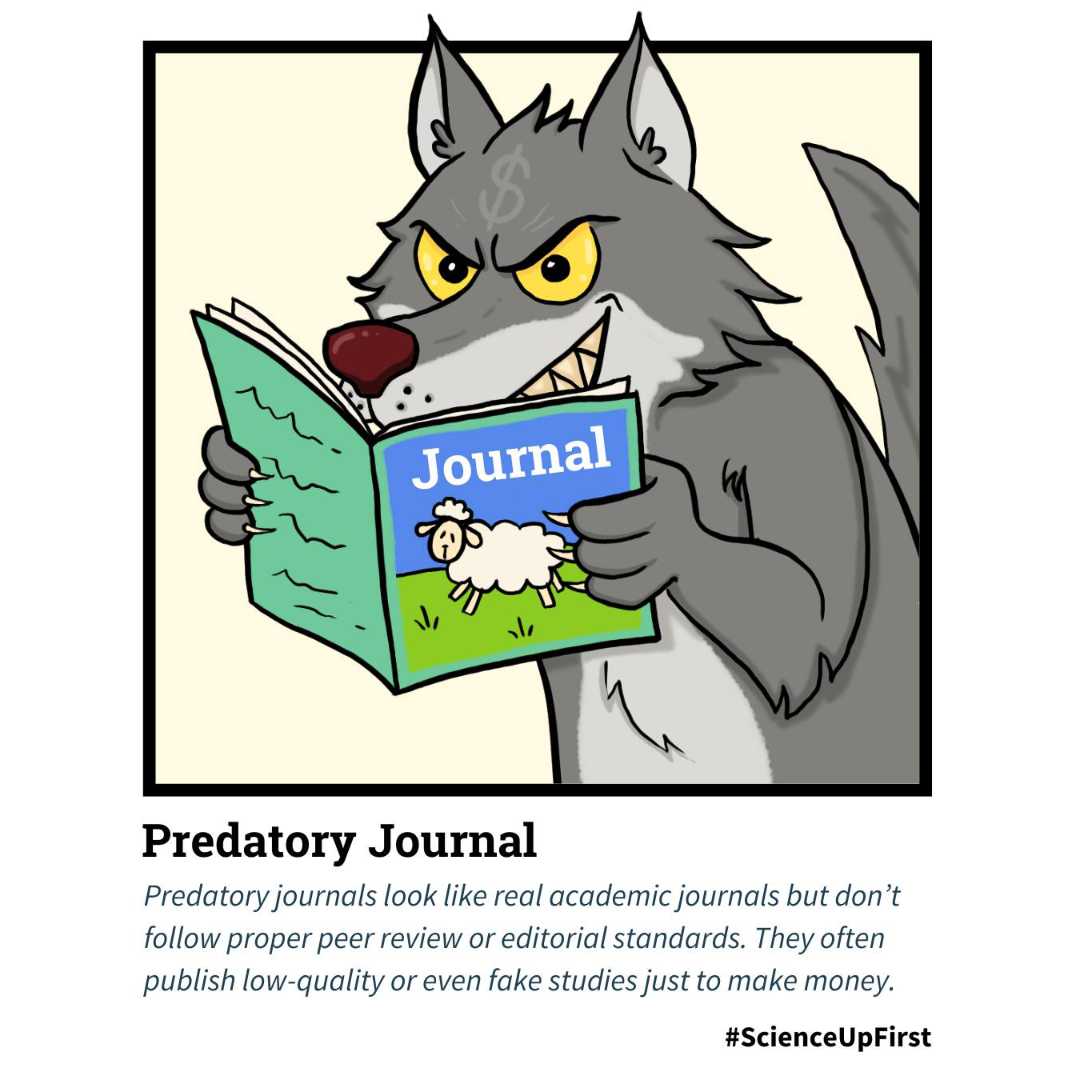
Not all journals are trustworthy. Some are predatory. 🦈
Predatory journals, sometimes called fraudulent, deceptive, or pseudo-journals, look like real academic journals but don’t follow proper peer review or editorial standards. They publish low-quality or fake studies to make money (1,2).
It’s important to know these journals exist. They can spread misinformation that sounds credible – because it’s “published”, but not all journals are trustworthy (3,4).
There are two main types of credible scientific journals (5,6):
• Subscription journals where researchers usually don’t pay a publication fee, but readers pay for a subscription to access the published articles.
• Open access journals, which are free for readers, because researchers typically pay a publication fee.
While the two models are different, both are still expected to follow strict scientific standards. That includes peer review (where other experts in the field critically evaluate the research before it’s published), clear disclosure of conflict-of-interest, and meeting ethical and quality requirements. These steps help ensure the science is trustworthy and reliable (7,8).
Predatory journals skip some or all of those steps. They exploit the open access model by charging fees without doing the real scientific work – no proper peer review, no expert checks, no quality control. In many cases, anyone can pay to publish anything. That’s how fake cancer cures or vaccine hoaxes sometimes end up in “journals” (1,3,9,10).
If something seems off, cross-reference with other articles or ask a medical professional or organizations (1). You can also Google the journal’s name with the word “predatory”, or check resources like Beall’s and Cabells lists, the Directory of Open Access Journals (DOAJ), predatoryjournals.org, or thinkchecksubmit.org, which track and list questionable or trustworthy journals (11-15).
- How to Spot Predatory Journals | PredatoryJournals.org
- Is MDPI Predatory | PredatoryJournals.org
- Predatory journals: no definition, no defence | Nature Comment | December 2019
- Identifying Predatory Publishers: A Checklist | Government of Canada – Panel on Responsible Conduct of Research | 31 July 2024
- Journal article access: Free, open, and subscription | NA&E Nurse Author & Editor on Wiley Online Library | April 2022
- Open access versus subscription journals: a comparison of scientific impact | BMC Medicine | July 2012
- OA vs. subscription journals | Springer
- Why Trust Science? | Book by Naomi Oreskes | 2019
- Predatory Journals: What They Are and How to Avoid Them | Journal of Toxicologic Pathology on PubMed Central | June 2020
- Open Access Publishing – Avoiding Predatory Journal Publications | University of Michigan-Dearborn | 22 May 2025
- Predatory Journals | PredatoryJournals.org
- Think. Check. Submit.
- The Directory of Open Access Journals (DOAJ)
- Beall’s List | 24 December 2024
- Cabells
Share our original Bluesky post!
Not all journals are trustworthy. Some are predatory. 🦈 Learn more about what makes a journal credible and how to spot predatory publications 👉 scienceupfirst.com/science-101/… #ScienceUpFirst
— ScienceUpFirst (@scienceupfirst.bsky.social) July 28, 2025 at 3:14 PM
[image or embed]
View our original Instagram Post!




